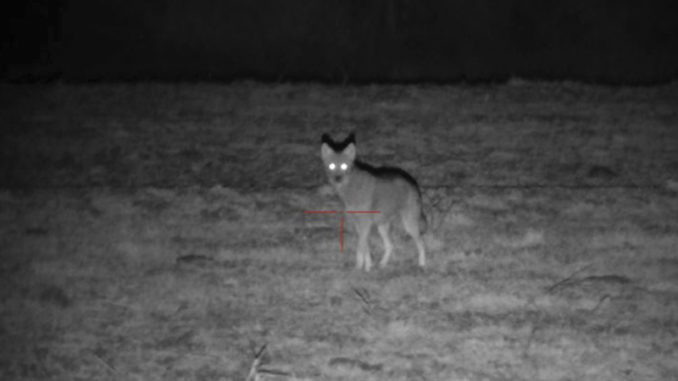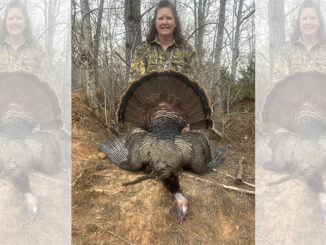
Coyote breeding season can be the most exciting time to hunt them
The end of deer season signals the beginning of breeding season for coyotes. And understanding coyote vocals determines your level of success this time of year, which can be the best time for a vocal back-and-forth with coyotes in your area.
Here are some tips on becoming a more successful coyote hunter during the breeding season.
The opener
The opener to your calling sequence sets the table for the story you are telling to coyotes in your area. Start with a lonely female or female interrogation howl to maximize the number of coyotes that will respond.
Territorial females will answer or investigate a strange female in their area. Males will look to pair up with a lonely female as breeding season nears. One-hundred percent of coyotes should have no problem investigating a lonely female coyote.
On the other hand, if you begin with a male howl, you would eliminate females that do not want male companionship. You would also eliminate other males that feel they are subordinate to the coyote that howled. Coyotes can read the level of dominance in a call and may avoid an opening male howl if it is too deep in tone.
A secondary opener is “mating calls” labeled on your caller remote. If you think coyotes may be really close, you can begin with some female whines and whimpers, then move into the female howl if you receive no response.
The response
The most important part of any coyote hunting sequence is the hunter’s response to the coyote’s response to your call. A hunter must learn to read the response they receive from their call. In this situation we will stick to beginning-of-the-year breeding season calling.
Typical coyote responses will be a howl back, a challenge howl or nothing at all. Each response is answered with a different call that is critical for the success of the hunt.
A single howl back tells you great information and dictates a passive approach in response. Here, the hunter has several options that should be rotated to keep sounds fresh. You can pick a prey distress response that tells the story of the coyote now eating in the responding coyotes territory.
Prey distress calls are numerous. So I try to match the area. An example is killdeer distress in an area with killdeer. The next option is pup chatter or pup fight. This tells the story of another coyote going to the original call and the two now meeting. Watch dogs meet each other and you will hear similar sounds. These sounds confirm to a coyote that the call was real.
Multiple howls from multiple coyotes together or different groups can be read as coyotes just telling you their location and/or territories. I would still go into my prey or fight sounds to try and pull a coyote into range. But a move toward one of the groups may be in order. Give that set a good 30 minutes before making a move closer to the howls.
Any bark in the coyote’s response, whether it be with a howl or just barks alone should be immediately responded to with barks. Most remotes label these responses as a challenge or bark. Always have a challenge response ready on your remote for just this occasion.
You are now in a verbal battle with a dominant coyote and are trying to get an aggressive response. Now you can go into any coyote combination sounds, whether it be fighting or mating. The storyline is that two coyotes are now in the area and this may trigger the coyote to come straight to the call.
This action can be some of the most exciting in the field as you go back and forth with an older coyote in their territory. Always watch for subordinate coyotes sneaking in silently to check out the fight.
The ending
If you lured a coyote into range and take a shot, immediately throw out a coyote distress call to try and bring in other coyotes that have listened to our exchange. Switch to coyote fights to try and coax that next coyote into a frenzy to investigate what has happened. Coyotes will often loop back and try to determine exactly what took place. This presents a chance for another harvest.
If unsuccessful, come back a few days later. The coyote that slipped away will be looking to meet back up with another, and maybe you can get another harvest.
Hunters should have a mixture of available sounds to hit the same areas while using different sounds. Coyotes will become accustomed to sounds, and sometimes need a new set up to investigate.
The breeding season is the time of year that hooked me onto calling coyotes. Hunters should be ready to respond to vocalizations, which in my opinion adds excitement to any hunt. Preset favorites on your caller remote are a must. Load in a few sounds from this article and you will see your harvest numbers climb.
_____________
Click here to get more predator hunting tips from Gene “The Mailman” Wisnewski




Be the first to comment